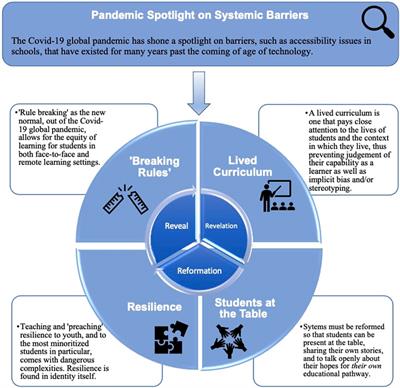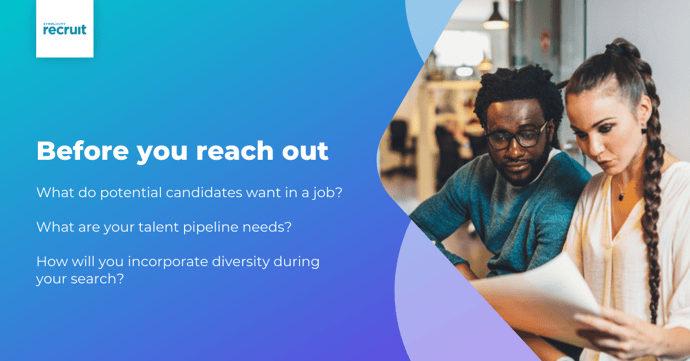Table of Contents
The world of work is becoming increasingly diverse, reflecting the rich tapestry of cultures, backgrounds, and perspectives that make up our global society. Diversity in the workplace is not only a moral imperative but also a strategic advantage for businesses. It brings fresh ideas, enhances creativity, and improves decision-making. However, achieving diversity in hiring remains a significant challenge. Job-search platforms, powered by artificial intelligence and data analytics, are emerging as powerful tools to bridge these gaps and promote inclusivity in the hiring process.
The evolving world of work stands as a testament to the rich mosaic of cultures, backgrounds, and perspectives that define our global society. In this landscape, diversity isn’t just a moral imperative; it’s a strategic imperative for businesses aiming to thrive in the 21st century. The benefits of a diverse workforce are compelling:
Fresh Ideas and Innovation: Diverse teams bring together individuals with unique viewpoints and experiences. This diversity of thought can spark creativity and innovation, leading to breakthrough solutions that might not have emerged in more homogenous environments.
Enhanced Problem Solving: Different perspectives encourage more robust and holistic problem-solving. Diverse teams can dissect challenges from various angles, leading to well-rounded solutions that consider a broader range of potential impacts and consequences.
Improved Decision-Making: Diversity fosters more comprehensive decision-making. When a team includes individuals from varied backgrounds, they are more likely to consider a wider array of factors, resulting in more informed and effective choices.
Better Customer Understanding: Diverse workforces are often better equipped to understand and serve diverse customer bases. They can relate to and empathize with a broader range of customers, which can lead to more tailored and effective products and services.
Global Perspective: In an interconnected world, businesses with diverse teams have a competitive edge. They can navigate global markets more effectively, understanding cultural nuances and market-specific trends that might be overlooked in monocultural teams.
Enhanced Brand Reputation: Organizations that prioritize diversity and inclusivity tend to have stronger brand reputations. Customers and partners increasingly value businesses that promote social responsibility and inclusivity.
Attracting Top Talent: Businesses known for their commitment to diversity often attract top talent from a wide range of backgrounds. This talent pool can bring in fresh skills, experiences, and perspectives, further enriching the organization.
Legal and Ethical Compliance: In many regions, there are legal requirements related to diversity and inclusivity in the workplace. Prioritizing diversity ensures that businesses remain compliant with these regulations and uphold ethical standards.
Despite the compelling advantages, achieving diversity in hiring can be challenging. Biases, both implicit and explicit, can seep into the recruitment process, hindering inclusivity. This is where job-search platforms, powered by artificial intelligence (AI) and data analytics, emerge as powerful allies:
Unbiased Screening: AI algorithms can screen job applications without the influence of human biases, focusing solely on qualifications and skills. This helps level the playing field for all candidates.
Diverse Talent Pools: These platforms can actively search for candidates with diverse backgrounds, ensuring a broader range of applicants are considered for positions.
Inclusive Language: AI tools can assess job descriptions and identify potentially exclusionary language, promoting more inclusive job postings.
Diversity Analytics: Job-search platforms can provide businesses with data analytics on their hiring processes, highlighting areas where diversity may be lacking and suggesting strategies for improvement.
Education and Training: AI-powered platforms can provide resources and training to both employers and job seekers, fostering a deeper understanding of diversity and inclusivity.
In summary, diversity in the workplace is a strategic advantage that businesses should actively pursue. Job-search platforms, infused with AI and data analytics, offer a promising avenue to bridge the diversity gap in hiring and promote inclusivity. By embracing these technologies and principles, businesses can position themselves for success in an increasingly diverse and interconnected global economy.
You can also read more about this here: Recruiting Internally and Externally
The Diversity Challenge
Achieving diversity in the workplace has been a longstanding goal for organizations. Yet, many businesses continue to struggle with diversity in their hiring practices. Various factors, including unconscious bias, limited networks, and systemic barriers, contribute to this challenge. Job-search platforms are poised to address these issues in several ways:
Achieving diversity in the workplace has been a longstanding goal for organizations. Yet, many businesses continue to struggle with diversity in their hiring practices. Various factors, including unconscious bias, limited networks, and systemic barriers, contribute to this challenge. Job-search platforms are poised to address these issues in several ways, paving the path towards a more inclusive workforce:
Anonymous Applications: Some job-search platforms have introduced features that allow candidates to submit applications anonymously. This approach hides personal identifying information, such as names or photos, from employers during the initial screening process. By prioritizing skills and qualifications over personal details, these platforms help mitigate unconscious bias in candidate selection.
Diverse Talent Pools: Job-search platforms have the potential to connect employers with a broader and more diverse pool of candidates. Through advanced algorithms and targeted outreach, these platforms can identify and recommend qualified candidates from underrepresented groups, increasing the chances of diverse hiring.
Skills-Based Assessments: Many job-search platforms are incorporating skills-based assessments and tests into their application process. This objective evaluation method allows employers to focus on candidates’ abilities rather than relying solely on resumes, reducing the impact of bias.
Inclusive Language Filters: Some platforms use language analysis tools to identify and remove biased or exclusionary language from job postings. This ensures that job listings appeal to a wider audience and do not inadvertently discourage diverse candidates from applying.
Diversity Analytics: Job-search platforms can provide employers with diversity analytics, helping them track and measure the diversity of their applicant pools and hires. This data-driven approach holds organizations accountable for their diversity goals and encourages transparency.
Educational Resources: These platforms can offer educational resources and guidance to both employers and job seekers on fostering diversity and inclusion. These resources may include articles, webinars, and best practices for creating inclusive work environments.
Promotion of Affinity Groups: Job-search platforms can highlight organizations that have established employee affinity groups and networks dedicated to supporting underrepresented communities. This visibility can attract diverse talent who value a sense of belonging.
Algorithmic Audits: Regular audits of platform algorithms can help identify and rectify any unintentional biases in recommendations or search results. Ongoing algorithmic refinement ensures that the platform remains committed to fair and equitable job matching.
Partnerships with Diversity Organizations: Collaborations between job-search platforms and diversity-focused organizations can lead to increased outreach and recruitment efforts targeting diverse talent. These partnerships expand the reach of job opportunities to underrepresented groups.
Feedback Mechanisms: Job-search platforms can implement feedback mechanisms that allow users to report instances of discrimination or bias. This helps in addressing issues promptly and maintaining a safe and inclusive online environment.
User Training: Platforms can offer training modules on unconscious bias and diversity and inclusion for both job seekers and employers. This education equips users with the knowledge and tools to navigate the hiring process more equitably.
In summary, job-search platforms have the potential to play a pivotal role in promoting diversity and inclusion in the workplace. By leveraging technology and adopting inclusive practices, these platforms can help organizations overcome long-standing hiring challenges and create workforces that reflect the rich diversity of talent available. In doing so, they contribute to the creation of more innovative, equitable, and socially responsible workplaces.
You can also read more about this here: Recruiting Internally and Externally

Unbiased Job Matching
AI-driven job-search platforms are designed to minimize bias in the hiring process. They focus on objective criteria such as skills, qualifications, and experiences, reducing the influence of personal biases related to gender, race, or other characteristics. This promotes fair and inclusive hiring practices.
AI-driven job-search platforms represent a significant leap forward in promoting fairness and inclusivity in the hiring process. These platforms are meticulously designed to prioritize objective criteria, such as skills, qualifications, and experiences, while consciously minimizing the impact of personal biases, whether related to gender, race, age, or other characteristics.
By doing so, AI-driven systems offer a level playing field for all job seekers. This means that candidates are evaluated solely based on their merits and the relevance of their qualifications to the job requirements. This impartiality not only benefits job seekers but also empowers employers to make more informed and equitable hiring decisions.
Moreover, AI-powered platforms can even help organizations identify and rectify any hidden biases that may exist within their recruitment processes. By analyzing data and patterns, these systems can provide insights into potential biases and disparities, allowing companies to take corrective measures and create a more diverse and inclusive workforce.
However, it’s crucial to recognize that while AI can mitigate certain biases, it’s not entirely devoid of potential challenges. Algorithms used in these platforms are only as unbiased as the data they are trained on. Therefore, continuous efforts are needed to ensure that the data sets used for training are diverse and representative, thus preventing any inadvertent bias from creeping into the system.
In essence, the role of AI in job matching extends far beyond just optimizing efficiency; it is a powerful force for social change in the employment landscape. By focusing on objective criteria and reducing the impact of personal biases, AI-driven platforms are pivotal in fostering fair and inclusive hiring practices, ultimately creating opportunities for a more diverse and talented workforce to flourish in the modern job market.
For additional details, consider exploring the related content available here Recruiting Internally and Externally

Expanding Candidate Pools
Traditional hiring methods often rely on personal networks and referrals, limiting the diversity of candidates considered. Job-search platforms cast a wider net, making it easier for employers to discover talent from diverse backgrounds and locations. This expanded reach contributes to a more diverse applicant pool.
nullFor a comprehensive look at this subject, we invite you to read more on this dedicated page: Bridging the Gap: Empowering Women in Cybersecurity – Boise …

Anonymous Applications
Some job-search platforms offer the option for candidates to submit anonymous applications. This feature allows job seekers to withhold personal information such as names or photos during the initial application process. It helps mitigate biases and ensures candidates are evaluated solely on their qualifications.
The inclusion of anonymous applications on job-search platforms marks a significant step toward fostering a fair and equitable hiring environment. This feature empowers job seekers in several ways and enhances the overall integrity of the recruitment process.
Reducing Bias: One of the primary advantages of anonymous applications is their ability to mitigate bias in the hiring process. By withholding personal information such as names, photos, gender, or age, employers are forced to focus solely on the qualifications and experience presented in the candidate’s application. This helps eliminate unconscious biases that can influence hiring decisions.
Fair Evaluation: Anonymous applications create a level playing field for all candidates, regardless of their background or personal characteristics. Hiring decisions are based on merit, skills, and relevant experience, ensuring that the most qualified individuals are selected for further consideration.
Encouraging Diversity and Inclusion: Anonymous applications promote diversity and inclusion by removing barriers that may deter candidates from underrepresented groups. When individuals feel that their applications are assessed solely on their qualifications, they are more likely to apply for positions that they might have otherwise hesitated to pursue.
Enhancing Privacy: Job seekers often have concerns about their personal information being misused during the application process. Anonymous applications address these privacy concerns by limiting the exposure of sensitive data until the later stages of recruitment, when it becomes relevant for background checks and interviews.
Candidate Confidence: Knowing that their applications are being evaluated fairly based on skills and qualifications can boost candidate confidence. This can result in a more diverse pool of applicants, including those who might have felt discouraged by biased hiring practices in the past.
Better Employer Practices: The implementation of anonymous applications encourages employers to review their recruitment processes and assess their own biases. It pushes organizations to focus on the skills and attributes that truly matter for a given role, leading to better hiring decisions.
Transparency and Trust: Offering anonymous applications sends a positive signal to job seekers that the company values transparency and fairness. This builds trust with potential employees and enhances the organization’s reputation as an inclusive and socially responsible employer.
Objective Benchmarking: With anonymous applications, employers can more objectively benchmark candidates against predefined criteria. This allows for a more systematic and consistent approach to candidate evaluation, leading to better hiring outcomes.
Measurable Results: Companies can track the impact of anonymous applications on their hiring practices by examining diversity metrics and the progression of candidates from underrepresented groups throughout the recruitment pipeline. This data can be used to fine-tune diversity and inclusion initiatives.
Legal Compliance: In some regions, anonymous applications may be legally mandated to prevent discrimination and promote equal opportunity hiring. Employers who embrace this practice can ensure they are compliant with relevant regulations.
In conclusion, anonymous applications on job-search platforms are a powerful tool for promoting fairness, diversity, and objectivity in the hiring process. By focusing on qualifications rather than personal attributes, these applications contribute to a more equitable job market and help organizations build diverse and high-performing teams. As this practice continues to gain traction, it plays a vital role in shaping the future of inclusive and bias-free recruitment practices.
To delve further into this matter, we encourage you to check out the additional resources provided here: Amazon scraps secret AI recruiting tool that showed bias against …

Skill-Based Matching
AI algorithms used in job-search platforms prioritize skill-based matching. Candidates are matched with job opportunities based on their competencies and experiences rather than relying solely on job titles or educational backgrounds. This approach provides a more accurate assessment of a candidate’s potential.
The evolution of AI algorithms in job-search platforms has brought about a significant paradigm shift in the way we approach talent acquisition. One of the most impactful aspects of this transformation is the emphasis on skill-based matching, which revolutionizes the hiring process.
Traditionally, the focus was often on job titles and educational backgrounds when assessing candidates. However, AI algorithms have made it possible to dive deeper into a candidate’s capabilities and potential. By prioritizing skills and experiences, these platforms provide a more comprehensive and nuanced evaluation of candidates, aligning their abilities with the specific requirements of a job.
This approach recognizes that a candidate’s potential is not solely defined by their job history or degrees. It acknowledges the importance of transferrable skills, which can be honed in various roles and settings. For instance, someone with excellent project management skills may excel in a leadership role, regardless of their previous job titles.
Furthermore, skill-based matching takes into account the ever-changing landscape of the job market. In today’s fast-paced world, job titles and even industries can quickly evolve or become obsolete. By focusing on skills, AI algorithms make it easier for candidates to transition between careers and adapt to new opportunities.
Another crucial aspect is the removal of biases often associated with traditional hiring processes. AI algorithms assess candidates objectively, without being influenced by factors such as gender, ethnicity, or age. This not only promotes diversity and inclusivity but also ensures that the most qualified candidates are identified and considered for positions.
Additionally, skill-based matching benefits employers by streamlining the hiring process. It helps companies find the right candidates more efficiently, reducing the time and resources spent on reviewing resumes and conducting interviews.
In conclusion, AI algorithms are driving a fundamental change in the way we approach job matching by prioritizing skills over traditional markers like job titles and education. This approach offers a more accurate, unbiased, and adaptable assessment of a candidate’s potential, benefiting both job seekers and employers alike. As technology continues to advance, the job market is becoming more dynamic and accessible, offering new opportunities for career growth and development.
To delve further into this matter, we encourage you to check out the additional resources provided here: bridging-the-digital-gender-divide.pdf

Diverse Candidate Suggestions
AI-driven platforms can suggest a diverse set of candidates for job openings. Employers receive recommendations that include candidates from various backgrounds and experiences, encouraging them to consider a broader range of applicants.
AI-driven platforms are ushering in a new era of inclusivity and diversity in the world of recruitment. By leveraging sophisticated algorithms and data analysis, these platforms can break down traditional barriers and biases that have long hindered diversity in hiring processes. Here’s how:
Expanding the Talent Pool: AI-driven platforms cast a wide net, tapping into a global talent pool. They don’t discriminate based on geographic location or traditional markers of qualifications, opening up opportunities for candidates from various regions and backgrounds. This means that employers are no longer restricted to a narrow local talent pool but can access a diverse array of candidates.
Mitigating Unconscious Bias: Unconscious bias, often deeply ingrained in traditional hiring practices, can inadvertently lead to the exclusion of certain demographics. AI, on the other hand, is programmed to be impartial. It doesn’t factor in gender, race, age, or other irrelevant attributes when making recommendations. This impartiality mitigates the impact of unconscious bias in the selection process.
Skills-Based Matching: AI-driven platforms focus on skills and qualifications, rather than personal characteristics. This shift in emphasis allows employers to evaluate candidates based on their abilities, experiences, and potential contributions to the organization. It also encourages hiring managers to prioritize merit over other factors.
Ensuring Equal Opportunity: By presenting employers with a diverse array of candidates, AI platforms help ensure equal opportunity. Employers are prompted to consider applicants from underrepresented groups who may have otherwise been overlooked. This proactive approach fosters a more inclusive workforce and promotes diversity at all levels of an organization.
Fostering Innovation: Diverse teams bring a wealth of perspectives and ideas to the table. When AI platforms encourage employers to embrace diversity, they’re not just fulfilling a social responsibility; they’re also fostering innovation. Diverse teams are more likely to generate creative solutions and adapt to an ever-changing business landscape.
Enhancing Organizational Culture: Embracing diversity isn’t just about ticking boxes; it’s about creating an inclusive and equitable organizational culture. AI-driven platforms can play a role in building this culture by bringing in candidates from diverse backgrounds who can contribute to a richer, more dynamic workplace environment.
Improving Reputation: Companies that actively promote diversity and inclusivity through their hiring practices tend to have better reputations. This can attract top talent and customers who value diversity and social responsibility, ultimately benefiting the bottom line.
In conclusion, AI-driven platforms are powerful tools for transforming the way we approach hiring. By suggesting a diverse set of candidates for job openings, these platforms not only broaden the horizons of employers but also contribute to a more equitable and innovative job market. They help organizations move closer to the goal of a workforce that reflects the rich tapestry of our global society, ultimately leading to better decision-making and stronger, more resilient businesses.
For a comprehensive look at this subject, we invite you to read more on this dedicated page: Recruiting Internally and Externally

Inclusive Language Analysis
Some job-search platforms use natural language processing (NLP) to analyze job postings for inclusive language. They flag or suggest modifications to job descriptions that may inadvertently deter diverse candidates. This ensures that job postings are welcoming to a diverse audience.
nullTo delve further into this matter, we encourage you to check out the additional resources provided here: Washington State DEI Empowerment Conference 2023 | Office of …

Data-Driven Insights
AI offers data-driven insights into hiring practices. Job-search platforms can provide employers with analytics on the diversity of their applicant pool, interviewees, and hires. This data empowers organizations to track progress and make informed decisions to enhance diversity.
AI offers data-driven insights into hiring practices, revolutionizing how organizations approach diversity and inclusion initiatives. Job-search platforms, powered by AI, can provide employers with in-depth analytics on the diversity of their applicant pool, interviewees, and ultimately, their hires.
This wealth of data serves as a powerful tool in promoting diversity and inclusion within the workplace. Here’s how:
Transparent Assessment: AI algorithms can objectively analyze the demographic information of applicants, ensuring that hiring practices remain transparent. Employers can access breakdowns of gender, ethnicity, age, and other critical diversity metrics. This transparency is vital in recognizing areas that need improvement and showcasing the organization’s commitment to diversity.
Progress Tracking: By utilizing AI-driven analytics, organizations can track progress over time. They can see how diversity metrics evolve through various hiring cycles. This tracking is essential for assessing the effectiveness of diversity initiatives, identifying trends, and setting realistic goals for future improvements.
Identifying Bias: AI can help identify any inadvertent bias in the hiring process. It can flag potential disparities in interview invitations, offers, or rejections. By recognizing patterns of bias, organizations can take proactive measures to rectify these issues and ensure a more equitable selection process.
Tailored Strategies: Armed with data-driven insights, organizations can develop tailored strategies to enhance diversity. These strategies may include targeted outreach to underrepresented groups, revising job descriptions to minimize bias, or providing diversity training to employees involved in the hiring process.
Evaluating Outcomes: Beyond just tracking diversity in the applicant pool, AI can help evaluate the impact of diversity efforts on the final hires. It allows organizations to assess whether the diversity of candidates who make it to the final stages of recruitment translates into diverse hires.
Legal Compliance: AI can help organizations ensure compliance with diversity-related regulations and requirements. By tracking and analyzing data, companies can demonstrate their commitment to fair and equitable hiring practices, reducing the risk of legal challenges.
In conclusion, AI-driven insights provided by job-search platforms are invaluable tools for organizations striving to enhance diversity and inclusion in their workforce. By leveraging data-driven analytics, organizations can move beyond mere intentions to concrete actions, continually improving their hiring practices and fostering more diverse and inclusive workplaces. This not only benefits the organization’s bottom line but also contributes to a more equitable and representative job market.
Don’t stop here; you can continue your exploration by following this link for more details: Skills-based organizations | Deloitte Insights

Accessibility Features
AI-driven platforms often incorporate accessibility features, making them more inclusive for candidates with disabilities. These features may include screen reader compatibility, alternative text for images, and options for adjusting font sizes and contrast.
The integration of accessibility features within AI-driven platforms not only ensures inclusivity for candidates with disabilities but also signifies a commitment to creating a more equitable and user-friendly hiring process. Here’s how these features extend their positive impact:
Equal Opportunity: Accessibility features level the playing field, providing candidates with disabilities the same opportunities as their peers. This inclusivity is not just a legal requirement; it reflects an organization’s commitment to diversity and equal access to employment opportunities.
Enhanced User Experience: These features enhance the overall user experience for all candidates, not just those with disabilities. For example, adjustable font sizes and contrast settings cater to a broader range of preferences, accommodating users who may have visual discomfort or specific readability requirements.
Wider Talent Pool: By providing a more accessible application process, AI-driven platforms attract a wider talent pool. This can uncover hidden talents and skills that might have otherwise been overlooked, ultimately benefiting organizations through a more diverse and skilled workforce.
Positive Brand Image: Demonstrating a commitment to accessibility and inclusivity through AI-driven platforms can improve an organization’s reputation. Candidates and customers alike appreciate companies that prioritize social responsibility and equal access.
Compliance and Risk Mitigation: Compliance with accessibility standards and regulations is critical for avoiding legal issues and discrimination claims. Incorporating these features into AI-driven platforms reduces the risk of accessibility-related lawsuits and penalties.
Continuous Improvement: The development of accessibility features often involves user feedback and iterative improvements. This ongoing process ensures that the platform remains responsive to the evolving needs of candidates with disabilities, leading to a more user-centric experience for all.
Employer Branding: Being known as an employer that values diversity and inclusivity can attract top talent and enhance employer branding. Candidates are more likely to choose organizations that align with their personal values and beliefs.
Engagement and Productivity: Inclusive design principles in AI-driven platforms can benefit all employees. For example, clear and concise communication and well-designed interfaces can enhance overall productivity and engagement across the organization.
Leveraging Assistive Technologies: Accessibility features can be particularly valuable for employees with temporary disabilities or changing needs. For instance, an employee recovering from an injury may rely on accessibility features temporarily, highlighting the adaptability of the platform.
Market Expansion: AI-driven platforms with robust accessibility features can attract users beyond the typical job applicant pool. These platforms can become valuable resources for educational institutions, vocational rehabilitation programs, and organizations focusing on workforce development.
In essence, integrating accessibility features into AI-driven platforms represents a significant step toward a more equitable and inclusive job market. It not only benefits candidates with disabilities but also enhances the user experience for all individuals while positively impacting an organization’s brand image and its ability to attract and retain top talent.
Don’t stop here; you can continue your exploration by following this link for more details: FACT SHEET: Biden-Harris Administration Announces National …

Continuous Learning and Improvement
AI algorithms continually learn and adapt based on user interactions and feedback. This means that these platforms evolve to become better at promoting diversity and inclusivity in hiring over time.
AI algorithms in the realm of hiring and job matching are not static systems; they are dynamic and adaptive. They have the remarkable ability to continually learn and evolve, and this evolutionary process is fundamentally shaped by user interactions and feedback. This adaptability is a pivotal element in the journey towards promoting diversity and inclusivity in hiring.
Here’s how it works: AI algorithms, at their core, are designed to analyze vast amounts of data, including candidate profiles, job postings, and historical hiring outcomes. As candidates interact with these platforms—submitting applications, updating their profiles, or even receiving job recommendations—AI algorithms gather valuable insights. They track which candidates are successful in securing interviews and job offers, as well as the characteristics that contribute to this success.
This continuous learning process is where the magic happens. AI algorithms, over time, begin to discern patterns and trends that might not be immediately apparent to human recruiters. They identify factors that contribute to bias in hiring or lead to the underrepresentation of certain groups. This could include biases related to gender, ethnicity, age, or other demographics.
With this insight, AI algorithms can then adapt their recommendation and selection criteria to mitigate biases and foster diversity and inclusivity. For instance, they might prioritize job postings with inclusive language or place a higher emphasis on skills and qualifications rather than pedigree or other potentially biased criteria. They can also work to ensure that underrepresented candidates receive more equitable consideration.
Crucially, user feedback plays a pivotal role in this evolution. When users provide feedback, whether it’s related to the relevance of job recommendations or perceived biases, AI systems can use this input to fine-tune their algorithms. User feedback serves as a crucial feedback loop that allows these systems to continuously improve.
As AI algorithms become more adept at reducing bias and promoting diversity, the hiring process becomes fairer and more inclusive. This not only benefits underrepresented groups but also enhances the overall quality of talent acquisition. Diverse teams often bring a wider range of perspectives and experiences, leading to more innovative solutions and better decision-making within organizations.
However, it’s essential to note that this continuous learning process requires ongoing vigilance and ethical oversight. Human supervision is necessary to ensure that AI algorithms align with the organization’s values and ethical standards. Moreover, transparency in AI decision-making is critical, as it helps build trust among users and stakeholders.
In conclusion, AI’s capacity for continuous learning and adaptation holds great promise for promoting diversity and inclusivity in hiring. By leveraging user interactions and feedback, AI algorithms can evolve to minimize biases and facilitate fairer, more equitable hiring practices. This not only benefits individuals seeking employment opportunities but also contributes to the development of more diverse and innovative workplaces, ultimately advancing the broader goals of equity and inclusion in society.
For additional details, consider exploring the related content available here bridging-the-digital-gender-divide.pdf

In conclusion, job-search platforms are transforming the hiring landscape by providing tools and features that promote diversity and inclusivity. As organizations recognize the value of diverse talent, these platforms are critical in bridging gaps in hiring practices. Leveraging AI and data-driven insights, they enable employers to cast a wider net, eliminate bias, and create more equitable and inclusive workplaces. As businesses embrace these technological advancements, they move closer to realizing the many benefits of a diverse and inclusive workforce, fostering innovation and driving success in today’s dynamic global economy.
nullShould you desire more in-depth information, it’s available for your perusal on this page: Diversity in Tech: Closing the Gap in the Modern Industry
More links
Additionally, you can find further information on this topic by visiting this page: Recruiting Internally and Externally
